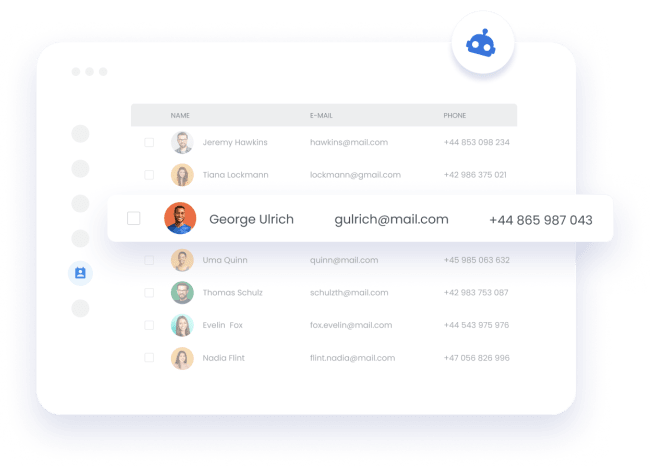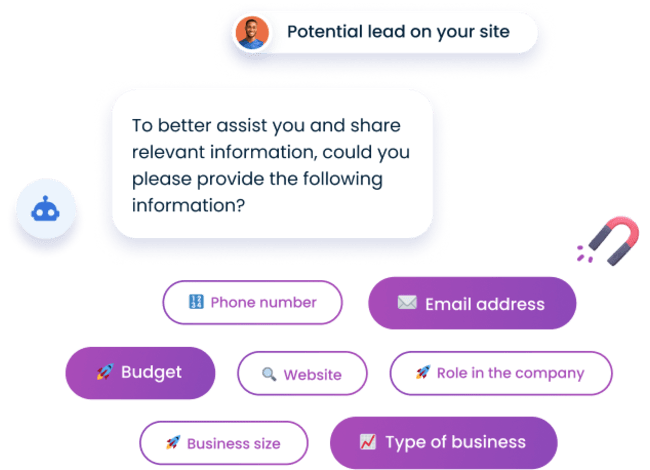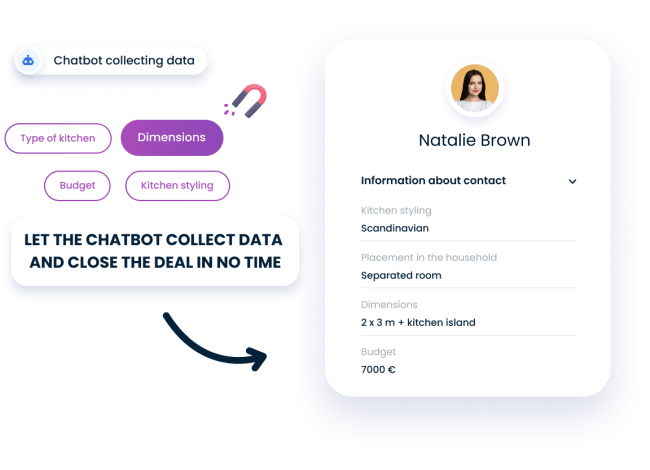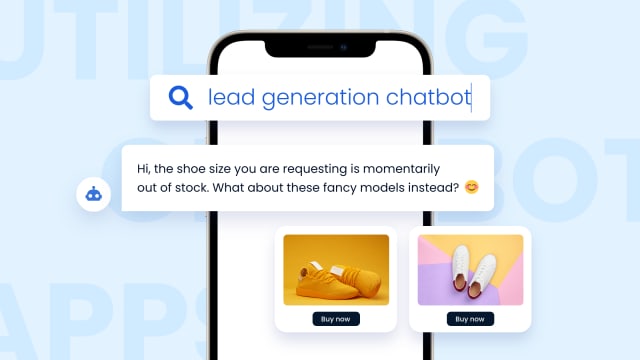Grow your e‑commerce with B2C lead generator
Grow your e‑commerce with B2C lead generator
Make more sales with a B2C lead generation chatbot. Say yes to automation, hello to artificial intelligence, and welcome to e-commerce B2C sales leads.

- E-commerce sales leads
- Increased conversions
- Boosted visitors engagement
Trusted by 100 000+ active customers worldwide
































Get more e-commerce leads for your B2C business



Kick-start sales with a B2C lead generator



Get more data from your chatbot inquiries with contact properties

Collect more than phone and email
Capture a wide range of contact information to supercharge your lead generation efforts and enhance your workflows.

Expand your contact form
Elevate your contact form to a powerful and data-rich tool to gather valuable insights.

Collect pre-sales data you need to sell more easily
Streamline your sales process by obtaining essential pre-sales data for a smoother conversion.

Collect data for better marketing and sales campaigns
Enhance your marketing and sales strategies through data enrichment for precise audience segmentation.
Talk to Our Expert
Unleash the power of data integration
Effortlessly connect and synchronize data from our contact hub with your CRM and email marketing systems.

Mailchimp

Salesforce

Pipedrive

Hubspot

GetResponse

Make

Zapier
Get more leads for your business with our B2C chatbot

“We see Smartsupp as a sales channel that allows us to increase our overall sales significantly. The conversion rate from chat alone is 10.3%, which proves the efficiency of this service.”

Martin Kubica
Head of Customer Support at inSPORTline.sk
Trending on our blog
We’ve created more resources for you to make the most of lead gen chatbot!
Get started for free
Use an AI chatbot to generate leads at your B2C business
Smartsupp’s B2C lead generation chatbot: FAQ
A B2C generator is a tool for collecting leads in the business-to-consumer context. Chatbots are highly effective for this purpose. They engage potential customers, support them through the sales funnel, and drive conversions. You can send messages based on set conditions and support communication with AI technology.
B2C lead generation takes many forms. For example, you can use inbound lead gen strategies like chatbots or social media marketing. Outbound methods are also available, such as email lead generation.
Typical B2C lead generation services include content marketing, social media campaigns, influencer partnerships, and chatbot interactions. They all engage potential customers, drive website traffic and turn prospects into buyers.
Some B2C strategies for lead generation are: using chatbots, running targeted advertisements, offering customized promotions, setting up loyalty programs, and optimizing landing pages. Also, remember to track progress and use robust tools for successful conversions.
Using high-quality lead generation tools in digital marketing, optimizing website design for user experience regularly, advertising with personalized content, implementing A/B testing, and automating email lead generation – these are all best practices for B2C companies.
Chatbot is one of the most effective AI lead-generation tools for B2C businesses, as it engages prospects in real-time conversations. No need to fill out the forms before reaching out, just a casual chat on the spot. It also gathers important business information and qualifies leads.


